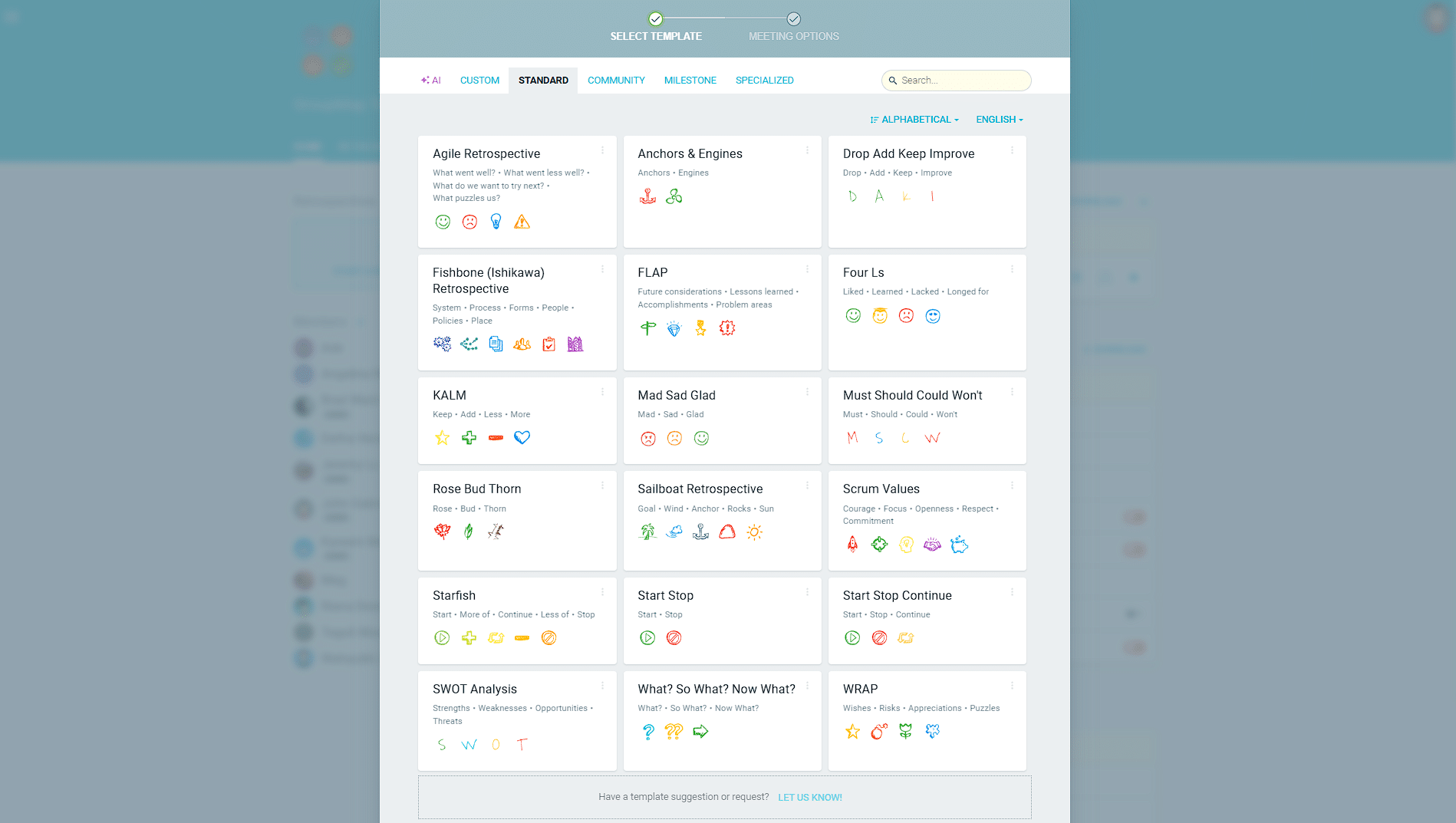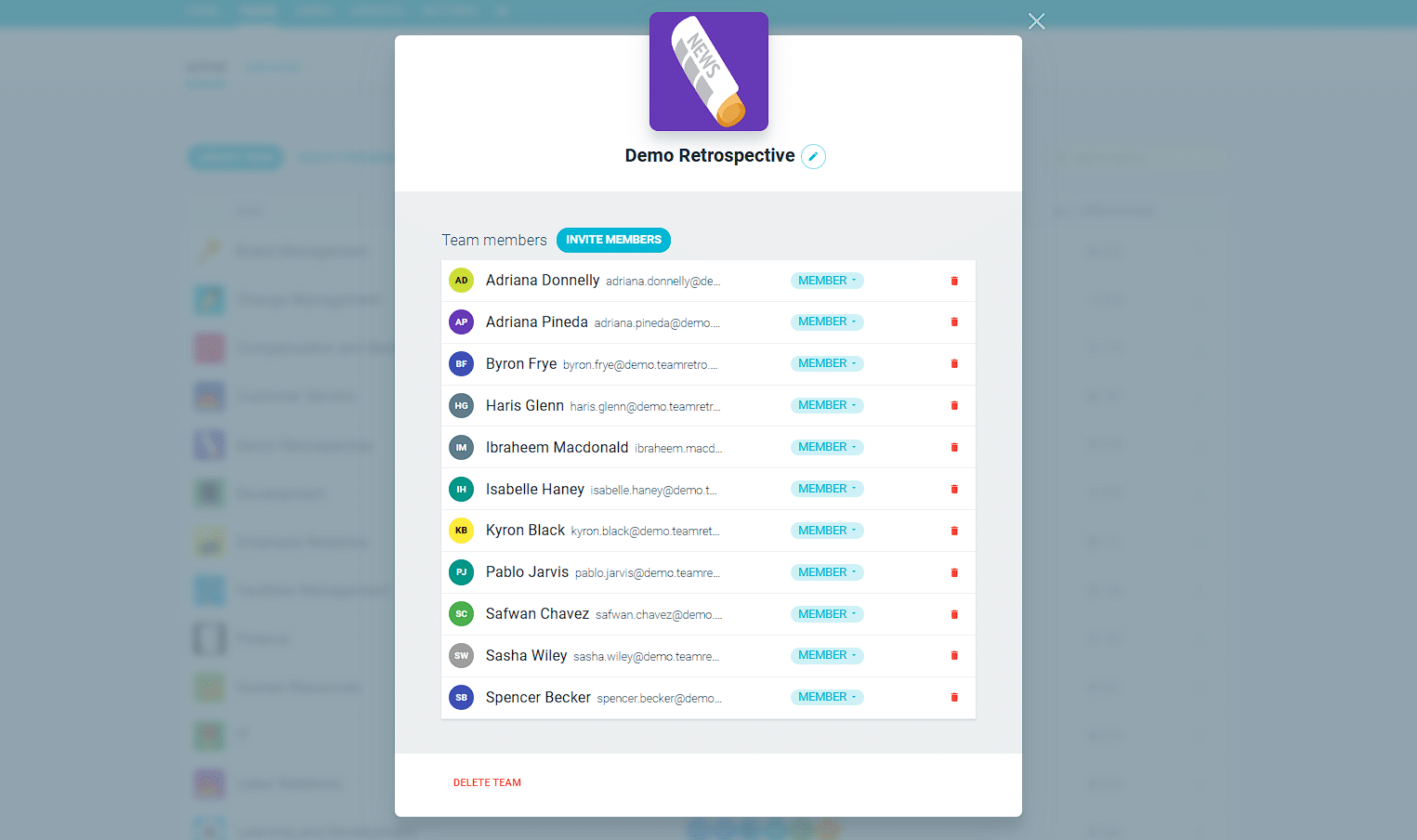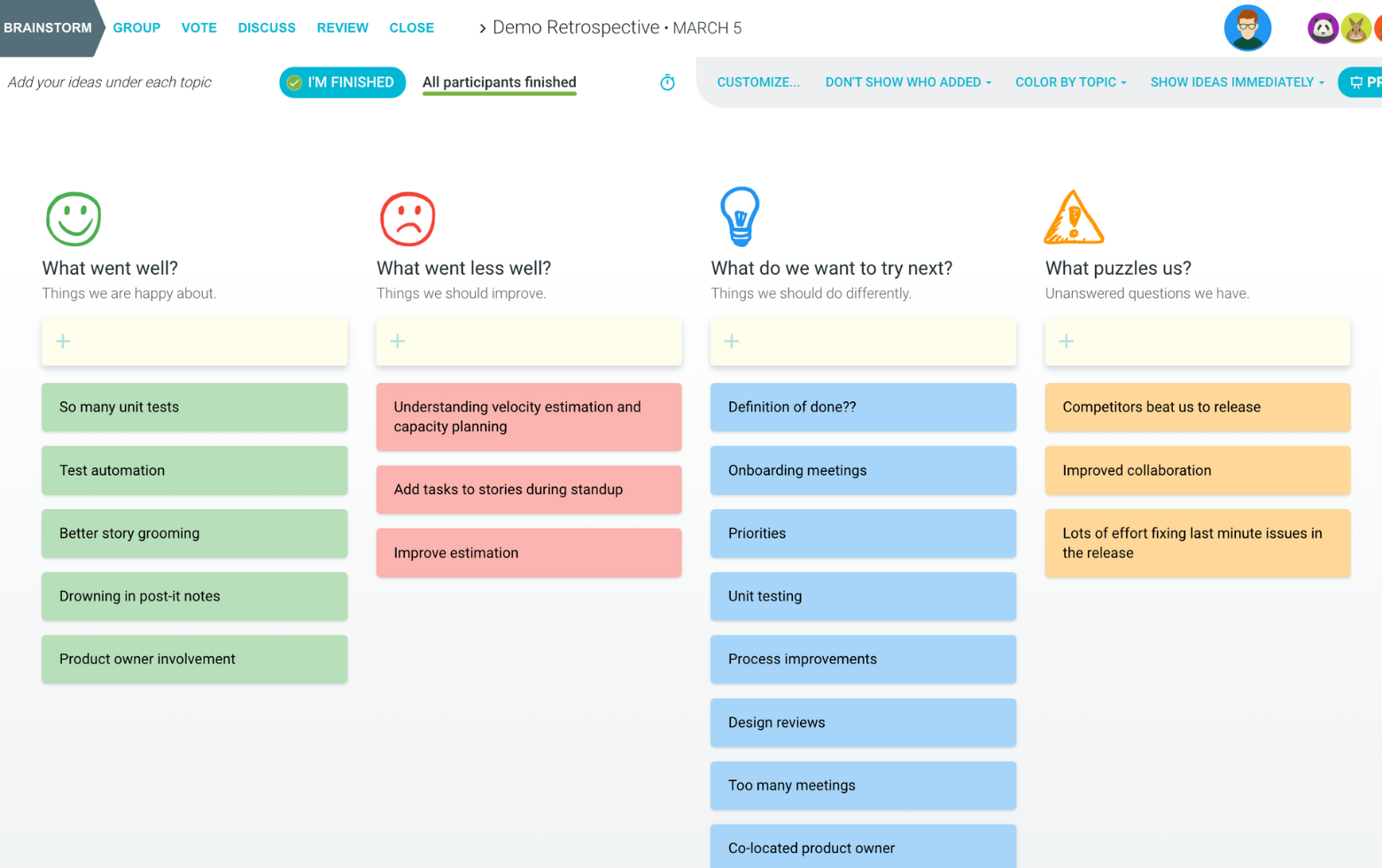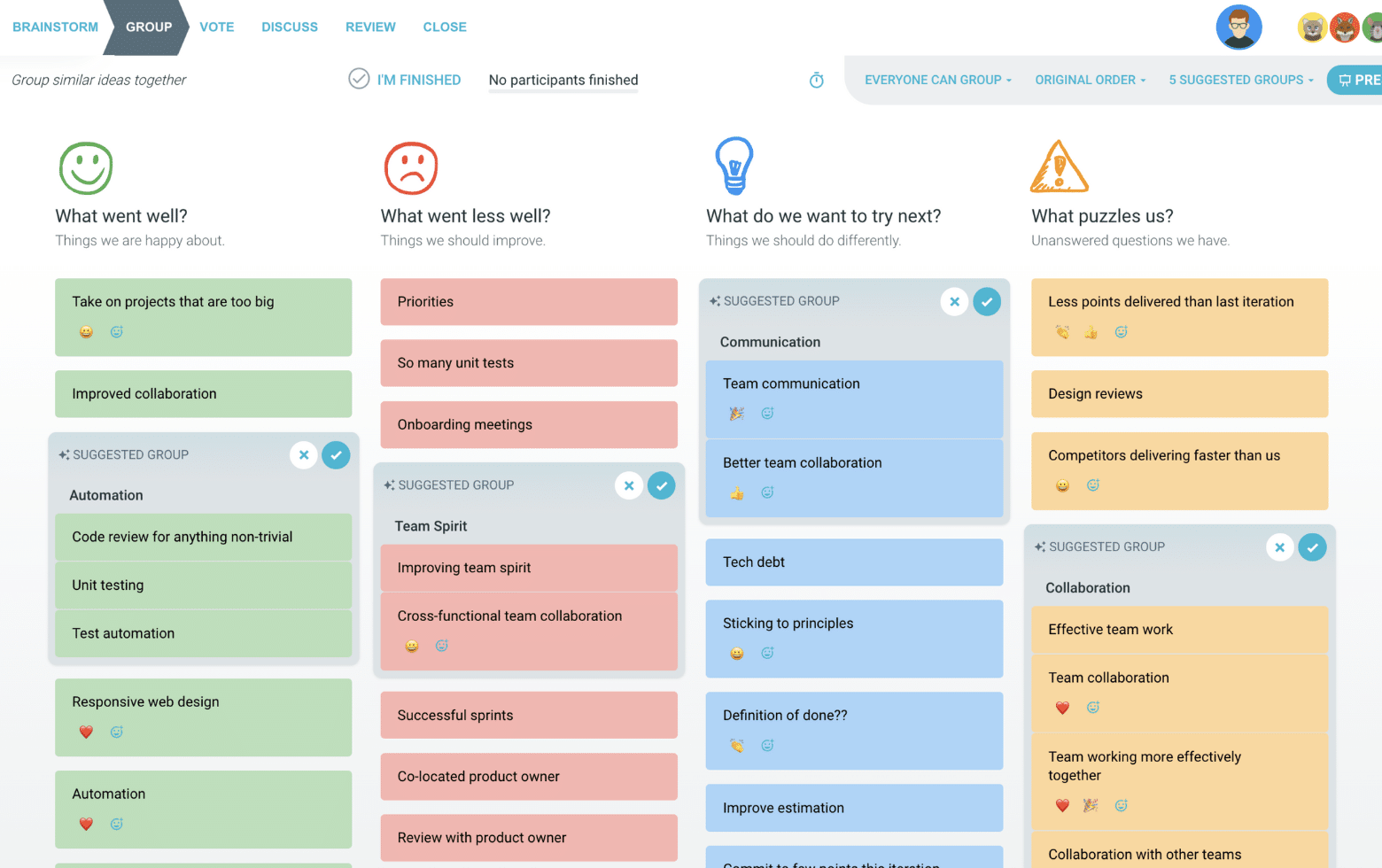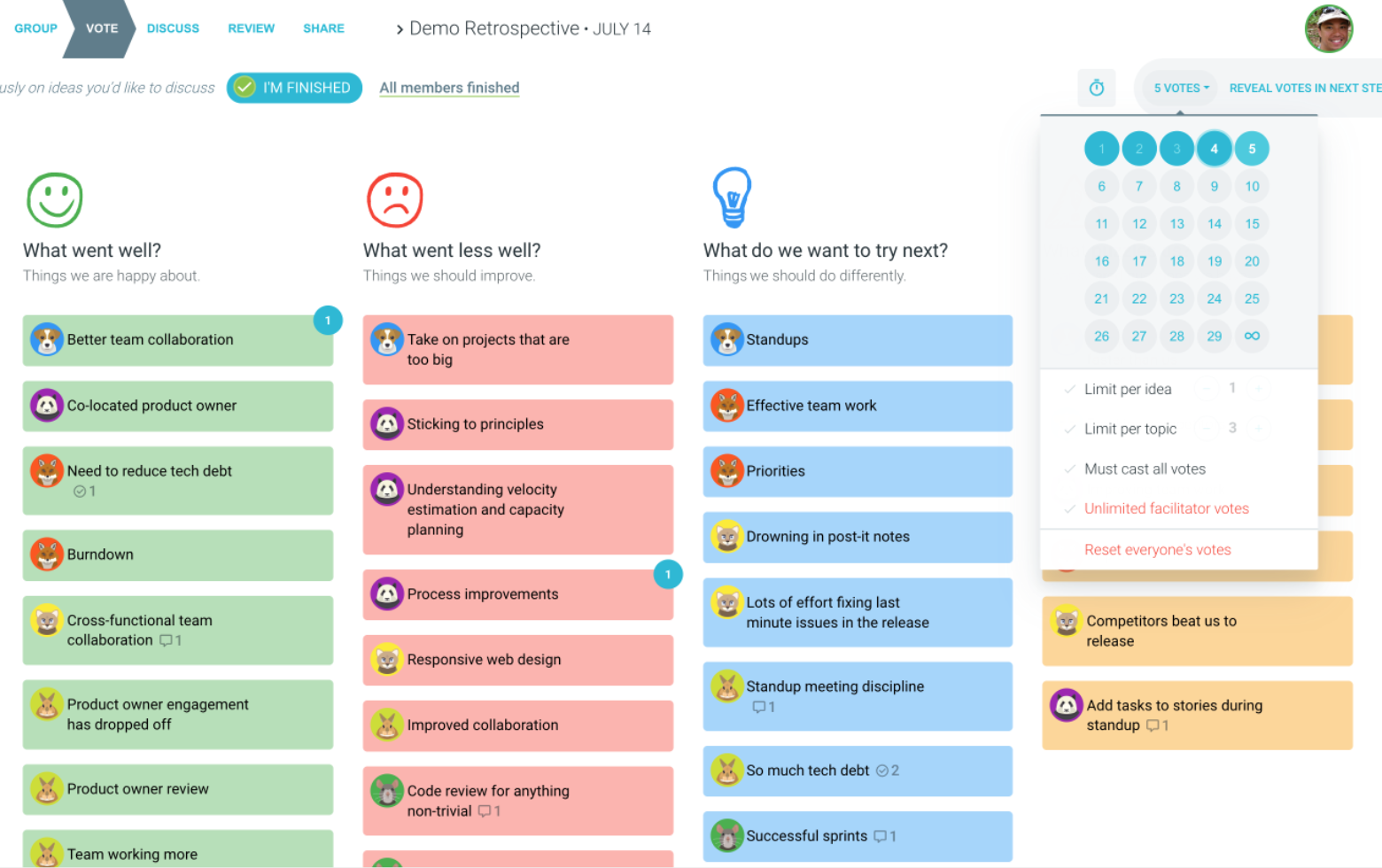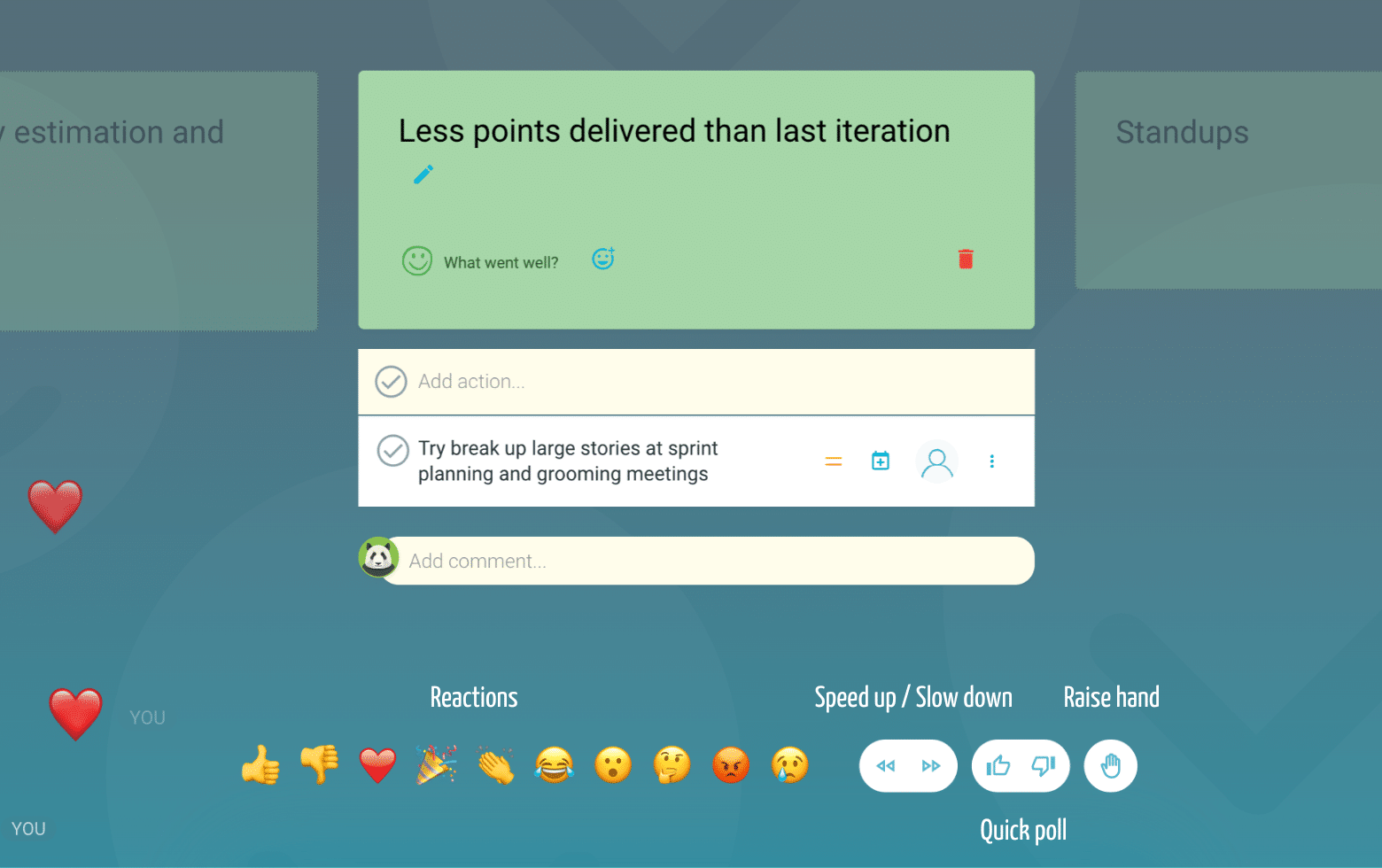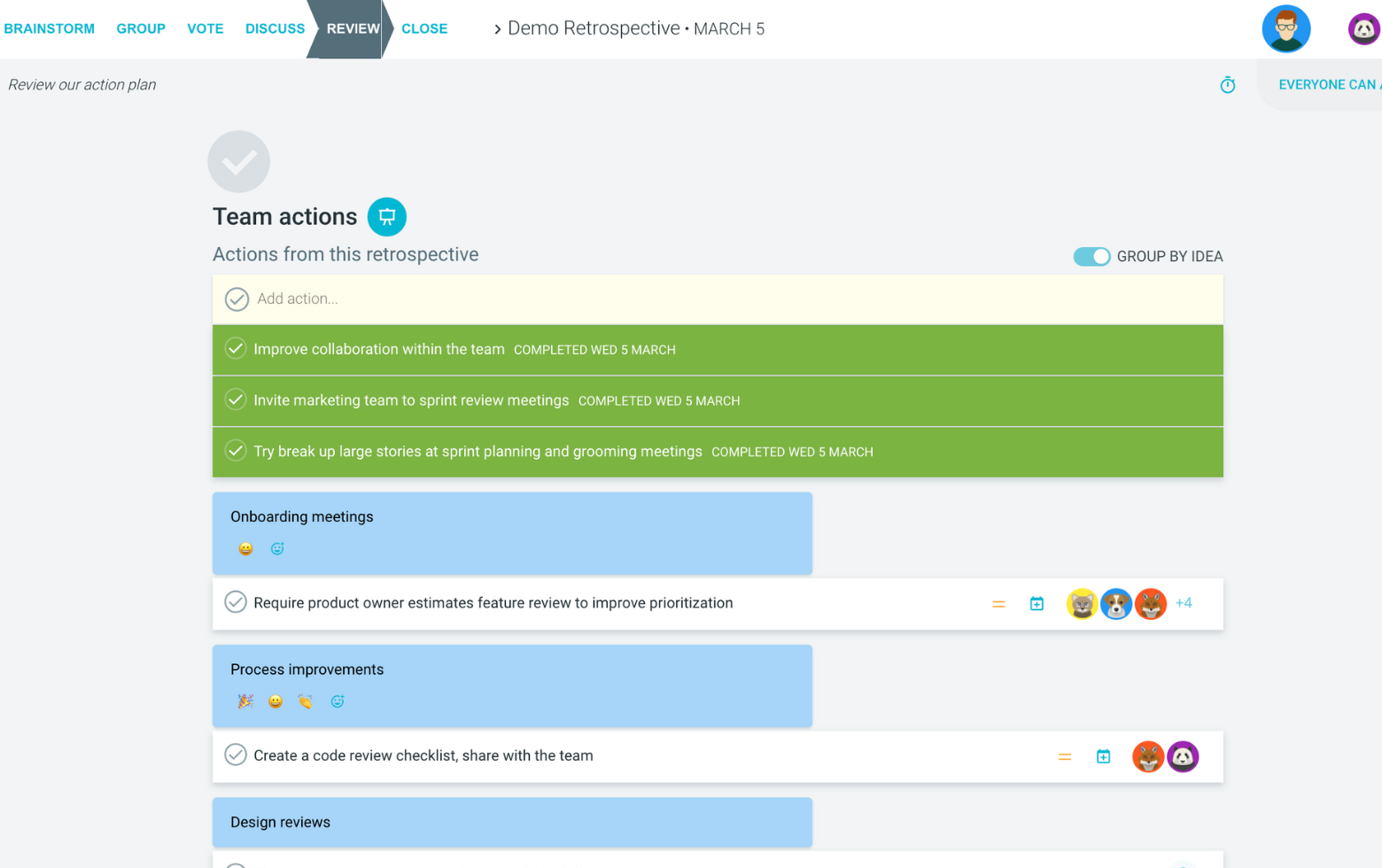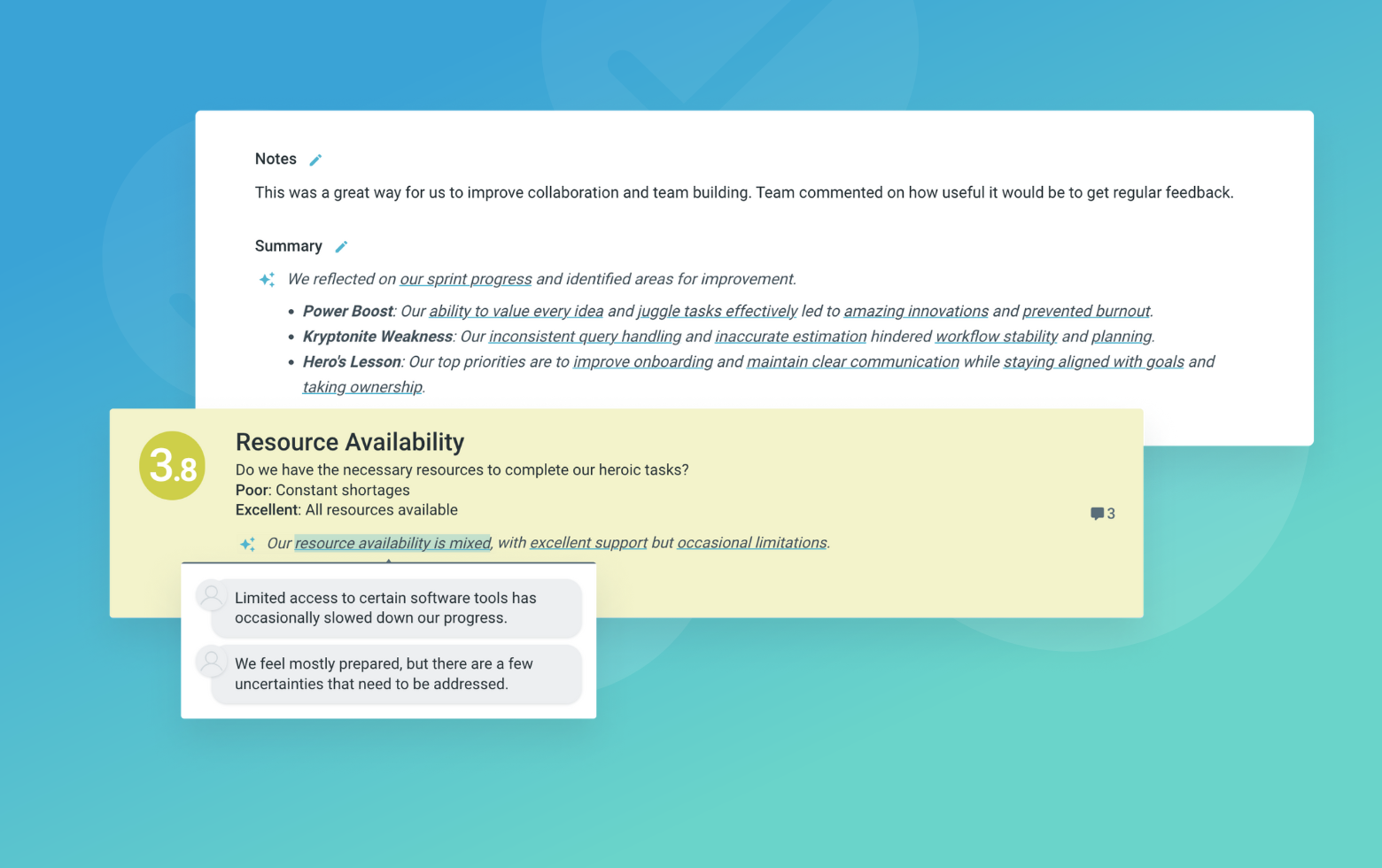The Sprint Clinic retrospective uses a medical consultation metaphor to diagnose and treat team challenges. By framing issues as 'symptoms' and solutions as 'treatments,' teams can systematically identify root causes and develop effective remedies for their sprint challenges.
This format helps teams think analytically about their problems while maintaining a lighthearted approach. Just as a doctor examines symptoms, makes a diagnosis, and prescribes treatment, teams work through their sprint issues methodically, from identification to resolution.
The medical theme encourages teams to think holistically about their challenges, considering both immediate fixes ('treatments') and long-term improvements ('prevention'). This approach is particularly effective for teams who want to move beyond surface-level problem identification to develop sustainable solutions.
What is The Sprint Clinic Retrospective
Symptoms
What pains did you have in the last sprint?
Guide the team to identify specific issues that affected their sprint performance. Encourage detailed descriptions of problems rather than vague complaints. Think of this as collecting patient history - the more specific, the better the diagnosis can be.
Diagnosis
What could be the root causes?
Help the team dig deeper into each symptom to uncover underlying causes. Use techniques like '5 Whys' to get to the root of each issue. Ensure the team focuses on systemic causes rather than blaming individuals.
Treatment
How can we treat or manage this?
Focus on practical, actionable solutions that the team can implement. Like prescribing medicine, ensure the 'treatment' matches the 'symptoms' and 'diagnosis'. Prioritize solutions based on impact and effort required.
Follow Up
How can we track progress and improvement?
Establish clear metrics and checkpoints to monitor the effectiveness of implemented solutions. Like scheduling follow-up appointments, set specific times to review progress and adjust treatments as needed.
Prevention
What can we do to stay well?
Focus on proactive measures that can prevent issues from recurring. Like preventive medicine, these should be sustainable practices that become part of the team's routine.
Suggested icebreaker questions
- If your last sprint was a patient, what would its health status be on a scale of 1-10?
- What's your favorite home remedy for fixing a broken process?
Ideas and tips for your retrospective meeting
- Keep the medical metaphor light and fun - it's meant to help structure thinking, not to make the session too clinical
- Encourage everyone to contribute to each phase, as different team members may notice different symptoms or have unique solution ideas
- Use the 'Prevention' phase to build sustainable practices rather than quick fixes
- Document all agreed actions and assign owners to ensure follow-through
- Consider using visual aids like charts or graphs to track improvements over time
- Focus on systemic issues rather than individual performance
.
How to run effective meetings with TeamRetro
Start Your Session in a Click
Log into TeamRetro and choose your template. Customise questions and the workflow to create your perfect retro for your team.
Create Your Team Easily – No Separate Accounts Needed
Brainstorm Individually – Free From Bias
Smart Grouping for Faster Insights
Fair, Flexible, and Fast Voting
Engage, React, and Capture Key Insights
Walk your team through ideas one by one with Presentation Mode. Stay in sync, spark real-time discussions, and capture feedback with comments, live reactions, and polls—all in one place.
Turn Ideas Into Action
Propose next steps with team buy-in, get AI-powered action suggestions, and keep everything in one place. Committed actions sync to your personal dashboard and integrate with your workflow tools—keeping you on track.
Save, Share, and Stay on Track
Get quick AI-powered summaries, add facilitator notes, and store retrospectives in your library for easy access. Schedule your next session and track published actions to keep your team accountable at the next retro.
Turn Team Data into Actionable Insights
Uncover trends, common themes, and key engagement metrics at a glance. Track sentiment shifts, analyze conversations, and monitor completed actions to drive continuous improvement.
